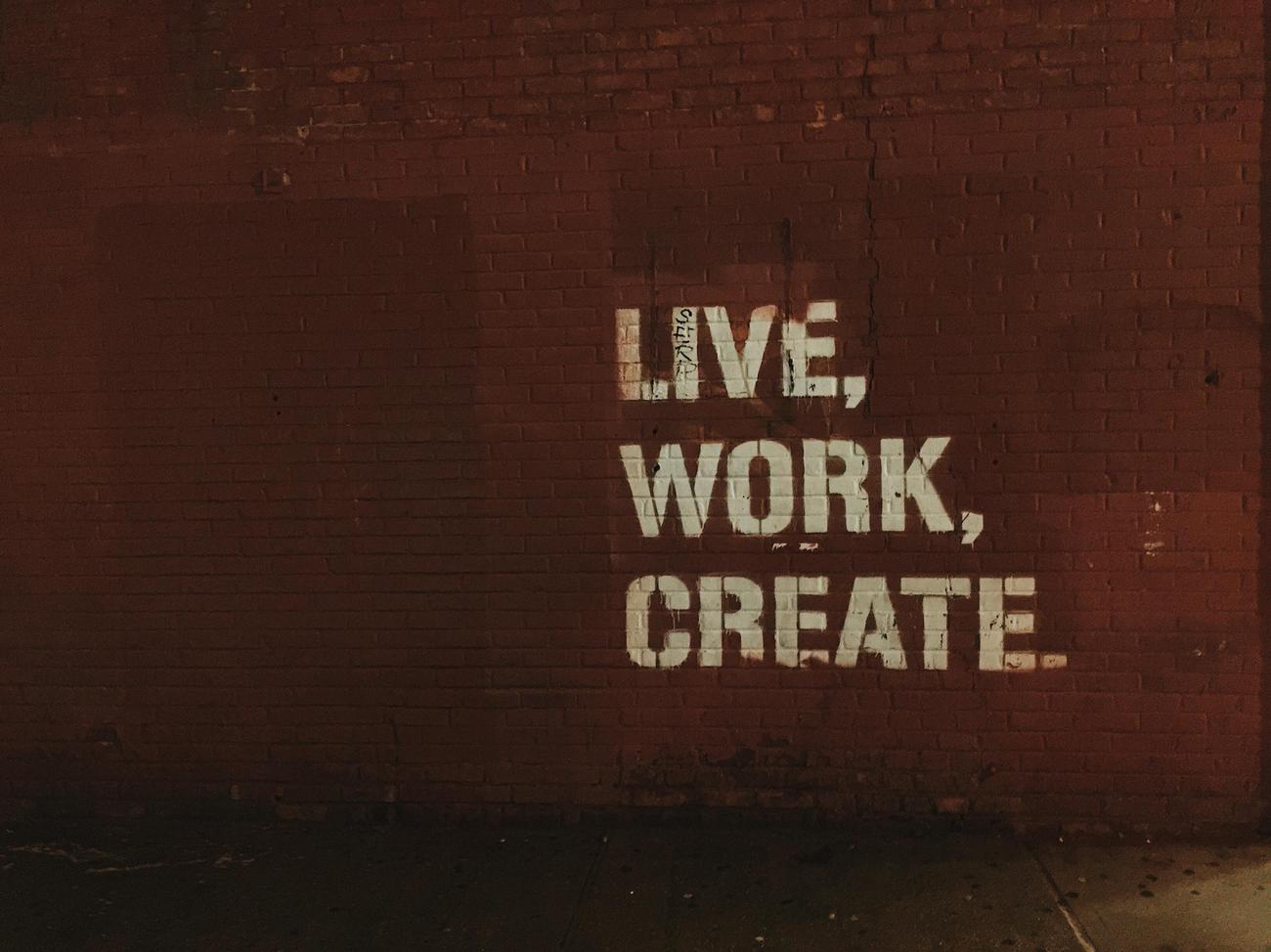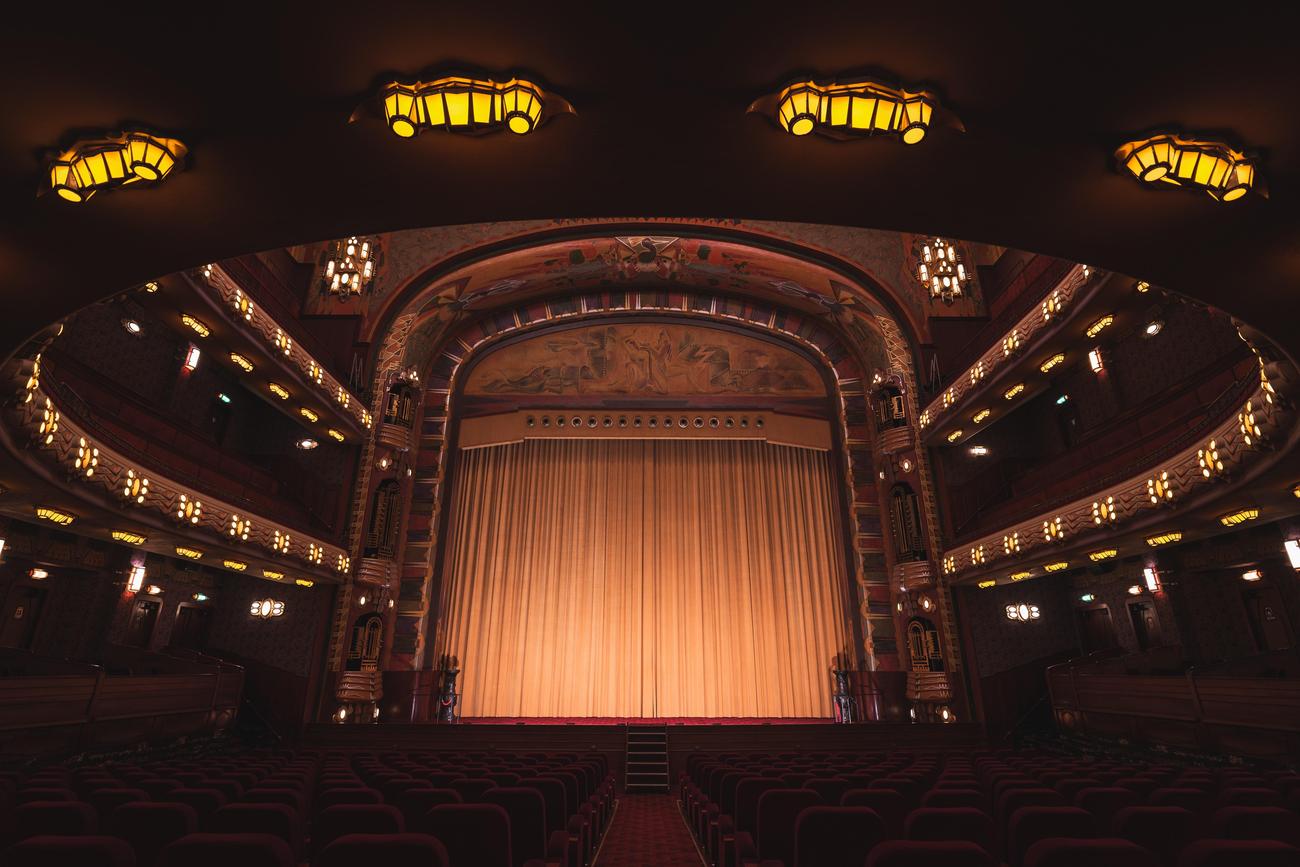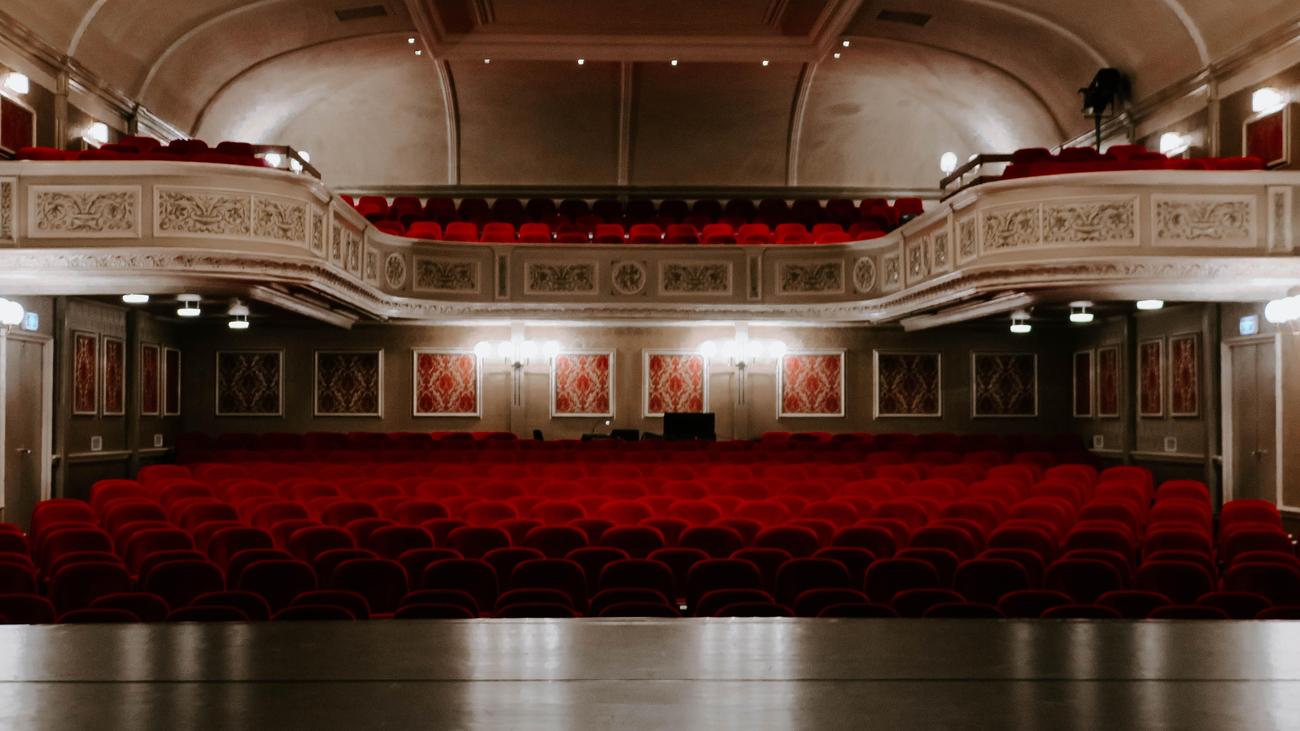Welcome to the enchanting world of Broadway, where the glitz and glamour of showbiz collide with the raw emotions of live performances. Prepare to embark on a journey that will take you behind the scenes and unveil the hidden gems that have shaped the illustrious history of this iconic cultural phenomenon. In this article, we will delve into the lesser-known aspects of Broadway, unearthing the captivating tales and little known facts that have made it the beacon of artistic brilliance it is today. So sit back, relax, and let us transport you into a realm where dreams come true and the magic of Broadway truly comes alive.

Little Known Facts About Broadway
Broadway, the heart and soul of the theater industry, is a world filled with wonder and magic. But beyond its dazzling lights and iconic shows, there are hidden gems that even the most avid theater enthusiasts may not be aware of. In this article, we will delve into some little known facts about Broadway, giving you a glimpse into the rich history and intriguing secrets that lie within this renowned cultural phenomenon.
1. The Rise of “The Great White Way”
Did you know that Broadway was once referred to as “The Great White Way”? The name originated from the brightly lit theater marquees that illuminated the streets, creating a stunning spectacle. This moniker captured the essence of Broadway’s vibrancy and has become synonymous with its grandeur.
“Once known as ‘The Great White Way,’ Broadway’s dazzling lights continue to enthrall audiences to this day.”
2. Broadway’s Secret Theater District
Contrary to popular belief, the majority of Broadway theaters are not actually located on Broadway itself. While only four theaters reside on the iconic street, the rest are nestled within the surrounding Theater District. So, the next time you stroll along Broadway, keep in mind that the true theatrical magic lies just around the corner.
3. Broadway’s Lengthy Legacy
Stretching for an impressive 33 miles, Broadway holds the title of being the longest street in New York City. As you traverse its path, you can’t help but feel the weight of history and the immeasurable impact this street has had on the world of theater.
4. Record-Breaking Productions
Broadway has had its fair share of record-breaking productions. “The Lion King” reigns supreme as the highest-grossing Broadway show of all time, captivating audiences with its captivating story and stunning visuals. Meanwhile, “The Phantom of the Opera” holds the distinction of being the longest-running show in Broadway history.
5. A Mecca for Theater Lovers
Each year, Broadway mesmerizes nearly 15 million theatergoers from around the world. Its shows have the power to transport audiences to different worlds, evoke intense emotions, and create lifelong memories. With its diverse productions and timeless classics, Broadway truly holds a special place in the hearts of all who attend.
“From tourists seeking a bucket-list experience to locals embracing their passion for the arts, Broadway’s allure knows no bounds.”
6. Broadway’s Economic Impact
Beyond its artistic value, Broadway plays a pivotal role in sustaining New York City’s economy. In 2019 alone, it generated a staggering $1.75 billion, making it a driving force behind the city’s prosperity. The theater industry provides employment opportunities, stimulates tourism, and contributes to the vibrant fabric of the city.
7. The Enchanting Ghost of Olive Thomas
Rumors and legends add an extra layer of mystique to Broadway’s heritage. The New Amsterdam Theatre, home to many magical performances, is believed to be haunted by the ghost of Olive Thomas. Olive, a popular Ziegfeld Follies girl from the 1920s, tragically passed away, and her spirit is said to linger within the theater’s hallowed halls, adding an eerie touch to its already enchanting atmosphere.
8. An Abundance of Shakespearean Adaptations
Shakespeare’s timeless works have found a home on Broadway, with numerous adaptations gracing its stages throughout history. From “Romeo and Juliet” to “Macbeth,” these productions infuse the Bard’s words with a modern twist, captivating audiences and showcasing the enduring relevance of his plays.
9. The Mysterious Absence of “I” in Broadway’s Seating Rows
Next time you attend a Broadway show, take notice of the seating rows. You might be surprised to find that the letter “I” is noticeably missing. This unique quirk can be traced back to an aesthetic decision made by theater architects, ensuring clarity and preventing any confusion between the letters “I” and “J.”
10. A Global Cultural Phenomenon
Broadway’s influence extends far beyond the borders of New York City. With a global reputation for excellence, it is a dream destination for theater enthusiasts worldwide. The allure of seeing a Broadway show is irresistible, embodying the epitome of live performance art and creating an experience that transcends boundaries.
“Broadway’s magnetic pull attracts theater lovers from every corner of the globe, igniting a shared love for the magic of live performance.”
As we lift the curtain on these little known facts, we uncover the layers of history, mystery, and artistry that make Broadway so extraordinary. From its dazzling lights to its record-breaking productions, Broadway’s hidden gems shine a light on the untold stories behind the stage. So, whether you’re a seasoned theatergoer or a Broadway novice, take a moment to appreciate the wonders that lie within this captivating world. Little known facts about Broadway reveal the hidden treasures that make it an enduring symbol of cultural enrichment and artistic brilliance.
Broadway is not just a street in New York City but a world of enchantment and breathtaking performances. If you have ever wondered about the storied history and fascinating facts about Broadway, prepare to be amazed. From iconic theaters like the Majestic Theatre to legendary shows like “The Phantom of the Opera,” there is a wealth of knowledge waiting for you. So, why wait? Click here to dive into the captivating world of Broadway and discover incredible facts that will leave you applauding in awe: Facts about Broadway.
Little Known Facts About Broadway
Broadway is more than just a world-renowned theater district; it is a cultural phenomenon that has captivated audiences for decades. If you’re ready to uncover fascinating facts about Broadway, then prepare to be amazed. Did you know that there are hidden tunnels beneath the iconic theaters? These tunnels were once used to transport actors and props discreetly, adding an extra layer of intrigue to the showbiz world. But that’s not all – Broadway also holds historical and cultural significance that is worth exploring. From its role in shaping American theater to its impact on the entertainment industry, the historical and cultural significance of Broadway cannot be underestimated. If you’re interested in communicating complex information about Broadway, then look no further. Our in-depth articles provide insights into the inner workings of this legendary district, from the magic that happens behind the scenes to the influential figures who have graced its stages. So, what are you waiting for? Click here to indulge in uncovering fascinating facts about Broadway and embark on a journey through the rich history and captivating world that this renowned district has to offer.
Title: The Enigmatic and Haunting History of Broadway
[youtube v=”-odnA-qhv1k”]
Introduction:
Broadway, known as the heart of American theater, has a rich history filled with fascinating tales and dramatic events. From mysterious ghosts to groundbreaking censorship battles, Broadway has been home to countless extraordinary stories. In this article, we will delve into the dramatic facts and peculiar incidents that have shaped the legacy of this renowned theater district.
Section:
In the early 1920s, an eerie phenomenon puzzled the Broadway community. People began reporting sightings of Olive Thomas, a performer who had previously appeared at Broadway’s New Amsterdam Theater. The strange aspect of these sightings was that Thomas had passed away in 1920. Her untimely death at the age of 25 shocked the Broadway community, and rumors swirled about the circumstances surrounding her demise. Some suspected foul play, suggesting that her husband, brother of Hollywood star Mary Pickford, may have poisoned her. Others believed Thomas had intentionally overdosed after discovering her husband’s infidelity. The sightings of Thomas’s ghost, clutching a little blue bottle, instigated fear among theatergoers, but they gradually faded with the decline of business in the mid-20th century.
However, Olive Thomas seemingly found new ways to make her presence known in the 21st century. Several years ago, employees of the New Amsterdam Theater were discussing the film “The Artist” when an uncanny incident occurred. More than a dozen DVDs on a nearby table suddenly flew across the room and crashed into a wall. The baffled employees were left in stunned silence, as there was no reasonable explanation for this inexplicable event. Dana Amendola, Disney Theatrical Group’s Vice President of Operations, firmly believed that Olive Thomas was behind this otherworldly occurrence.
Section (continued):
Broadway’s history traces back to the early years of New York City when it was still a Native American trail known as Wikwa’s Greek Trail. After Dutch settlers took over Manhattan, they renamed the path “Broadway,” derived from the nickname “breidegveg” due to its width. The British eventually gained control of the area, and with New York City’s rise, theater actors found a promising spot for their performances.
While theater in New York City initially followed the trends of English productions, the theater scene came to life in the late 18th century. In January 1798, the Park Theater, also known as the New Theater, opened its doors with a performance of Shakespeare’s “As You Like It.” This esteemed theater quickly garnered positive reception for its impressive stage and designs. The Park Theater marked the beginning of a new era for larger and better venues, leading to the proliferation of other Broadway theaters downtown.
One notable Broadway musical that left a lasting impact on the history of Broadway was “The Black Crook.” The show arose from the collaboration between a ballet company and a play about a sorcerer. Their combination birthed a six-hour-long spectacle combining song, dance, and drama. “The Black Crook” became a sensation, surpassing the lifespan of a typical play during that era and shaped the future of Broadway.
Section (continued):
Oscar Hammerstein I played a significant role in transforming Times Square, originally called Longacre Square, into the musical theater mecca we recognize today. Hammerstein constructed various theaters in the area, including the Olympia Theater and Victoria Theater. These venues, alongside others like the New Amsterdam Theater and Belasco Theater, became instrumental in bringing fame and grandeur to Broadway.
Two crucial developments further propelled Broadway’s influence. The advent of electricity revolutionized the theater scene, making performances safer and more visually spectacular. Broadway fully embraced electric light bulbs and earned its famous moniker, “The Great White Way.” Additionally, the establishment of the first subway line in 1904 connected downtown Manhattan to Times Square, making Broadway more accessible than ever before.
Broadway’s legacy also encompasses its encounters with censorship. May West, a renowned actress, was arrested in 1927 for her play “Sex,” which the court deemed obscene and indecent. The incident was not merely about the play but potentially targeted an upcoming production, “The Drag,” featuring gay characters. Meanwhile, Antoinette Perry, a Colorado-born actress turned director, left her indelible mark on Broadway by spearheading numerous shows and advocating for national theater institutions.
In conclusion, Broadway’s history is a tapestry woven with captivating tales and unforgettable moments. From the ghostly presence of Olive Thomas to the influential figures such as Oscar Hammerstein and Antoinette Perry, Broadway’s allure continues to captivate audiences worldwide. As the theater district thrives, its rich legacy lives on through the experiences of both performers and spectators, making Broadway an everlasting symbol of drama, creativity, and the pursuit of artistic excellence.

FAQ
Q: How many professional theaters are located along Broadway in Manhattan?
A: There are 41 professional theaters located along Broadway in Manhattan, New York City.
Q: What are the two most renowned theater districts in the world?
A: Broadway and London’s West End are the two most renowned theater districts in the world.
Q: Why was Broadway initially known as the “Great White Way”?
A: Broadway was initially known as the “Great White Way” because of its brightly lit theater marquees.
Q: Where is the Theater District located in relation to Broadway?
A: The Theater District, where most Broadway theaters are located, is not actually on Broadway itself. Only four theaters are situated on Broadway, while the rest are in the surrounding Theater District.
Q: What is the highest-grossing Broadway production of all time?
A: The Lion King is the highest-grossing Broadway production of all time.
- Mastering Leader in Spanish: The Complete Guide - April 19, 2025
- Uncovering Surprising Parallels: England Size Compared to US States - April 19, 2025
- Old Mexico Map: Border Shifts 1821-1857 - April 19, 2025
















